Atari!! Make a new game:
1. https://www.youtube.com/watch?v=tGsKzZtRwxw
a.) by this technique a Monitor with the music of Mozart or any Artist coming towards the User
1. https://www.youtube.com/watch?v=eHwR9kTIMeI
2. keyboard: Piano
b.) The piano is an acoustic, stringed musical instrument invented in Italy by Bartolomeo Cristofori around the year 1700 (the exact year is uncertain), in which the strings are struck by hammers. It is played using a keyboard,[1] which is a row of keys (small levers) that the performer presses down or strikes with the fingers and thumbs of both hands to cause the hammers to strike the strings.
Piano Keyboards - Walmart.com
https://www.walmart.com/browse/musical.../piano-keyboards/7796869_1128453
With so many loving video games the idea does not strain the teaching of value to the fun and education of all that fingering required for an instrument!!
For the visual cortex the keyboard would illuminate for the beginner and thus the money!! An advanced keyboard would teach actual notes to octaves!! The breakthrough is you, as you are the owner of PONG.
Piano
Jump to navigation
Jump to search
The piano is an acoustic, stringed musical instrument invented in Italy by Bartolomeo Cristofori around the year 1700 (the exact year is uncertain), in which the strings are struck by hammers. It is played using a keyboard,[1]
which is a row of keys (small levers) that the performer presses down
or strikes with the fingers and thumbs of both hands to cause the
hammers to strike the strings. The word piano is a shortened form of pianoforte, the Italian term for the early 1700s versions of the instrument, which in turn derives from gravicembalo col piano e forte[2] and fortepiano. The Italian musical terms piano and forte indicate "soft" and "loud" respectively,[3]
in this context referring to the variations in volume (i.e., loudness)
produced in response to a pianist's touch or pressure on the keys: the
greater the velocity of a key press, the greater the force of the hammer
hitting the strings, and the louder the sound of the note produced and
the stronger the attack. The name was created as a contrast to harpsichord,
a musical instrument that doesn't allow variation in volume. The first
fortepianos in the 1700s had a quieter sound and smaller dynamic range.
An acoustic piano usually has a protective wooden case surrounding the soundboard and metal strings, which are strung under great tension on a heavy metal frame. Pressing one or more keys on the piano's keyboard causes a padded hammer (typically padded with firm felt) to strike the strings. The hammer rebounds from the strings, and the strings continue to vibrate at their resonant frequency.[4] These vibrations are transmitted through a bridge to a soundboard that amplifies by more efficiently coupling the acoustic energy to the air. When the key is released, a damper stops the strings' vibration, ending the sound. Notes can be sustained, even when the keys are released by the fingers and thumbs, by the use of pedals at the base of the instrument. The sustain pedal enables pianists to play musical passages that would otherwise be impossible, such as sounding a 10-note chord in the lower register and then, while this chord is being continued with the sustain pedal, shifting both hands to the treble range to play a melody and arpeggios over the top of this sustained chord. Unlike the pipe organ and harpsichord, two major keyboard instruments widely used before the piano, the piano allows gradations of volume and tone according to how forcefully a performer presses or strikes the keys.
Most modern pianos have a row of 88 black and white keys, 52 white keys for the notes of the C major scale (C, D, E, F, G, A and B) and 36 shorter black keys, which are raised above the white keys, and set further back on the keyboard. This means that the piano can play 88 different pitches (or "notes"), going from the deepest bass range to the highest treble. The black keys are for the "accidentals" (F♯/G♭, G♯/A♭, A♯/B♭, C♯/D♭, and D♯/E♭), which are needed to play in all twelve keys. More rarely, some pianos have additional keys (which require additional strings). Most notes have three strings, except for the bass that graduates from one to two. The strings are sounded when keys are pressed or struck, and silenced by dampers when the hands are lifted from the keyboard. Although an acoustic piano has strings, it is usually classified as a percussion instrument rather than as a stringed instrument, because the strings are struck rather than plucked (as with a harpsichord or spinet); in the Hornbostel–Sachs system of instrument classification, pianos are considered chordophones. There are two main types of piano: the grand piano and the upright piano. The grand piano is used for Classical solos, chamber music, and art song, and it is often used in jazz and pop concerts. The upright piano, which is more compact, is the most popular type, as it is a better size for use in private homes for domestic music-making and practice.
During the 1800s, influenced by the musical trends of the Romantic music era, innovations such as the cast iron frame (which allowed much greater string tensions) and aliquot stringing gave grand pianos a more powerful sound, with a longer sustain and richer tone. In the nineteenth century, a family's piano played the same role that a radio or phonograph played in the twentieth century; when a nineteenth-century family wanted to hear a newly published musical piece or symphony, they could hear it by having a family member play it on the piano. During the nineteenth century, music publishers produced many musical works in arrangements for piano, so that music lovers could play and hear the popular pieces of the day in their home. The piano is widely employed in classical, jazz, traditional and popular music for solo and ensemble performances, accompaniment, and for composing, songwriting and rehearsals. Although the piano is very heavy and thus not portable and is expensive (in comparison with other widely used accompaniment instruments, such as the acoustic guitar), its musical versatility (i.e., its wide pitch range, ability to play chords with up to 10 notes, louder or softer notes and two or more independent musical lines at the same time), the large number of musicians and amateurs trained in playing it, and its wide availability in performance venues, schools and rehearsal spaces have made it one of the Western world's most familiar musical instruments. With technological advances, amplified electric pianos (1929), electronic pianos (1970s), and digital pianos (1980s) have also been developed. The electric piano became a popular instrument in the 1960s and 1970s genres of jazz fusion, funk music and rock music.

A grand piano (left) and an upright piano (right)
| |
| Keyboard instrument | |
|---|---|
| Hornbostel–Sachs classification | 314.122-4-8 (Simple chordophone with keyboard sounded by hammers) |
| Inventor(s) | Bartolomeo Cristofori |
| Developed | Early 18th century |
| Playing range | |
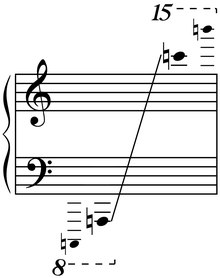 | |
An acoustic piano usually has a protective wooden case surrounding the soundboard and metal strings, which are strung under great tension on a heavy metal frame. Pressing one or more keys on the piano's keyboard causes a padded hammer (typically padded with firm felt) to strike the strings. The hammer rebounds from the strings, and the strings continue to vibrate at their resonant frequency.[4] These vibrations are transmitted through a bridge to a soundboard that amplifies by more efficiently coupling the acoustic energy to the air. When the key is released, a damper stops the strings' vibration, ending the sound. Notes can be sustained, even when the keys are released by the fingers and thumbs, by the use of pedals at the base of the instrument. The sustain pedal enables pianists to play musical passages that would otherwise be impossible, such as sounding a 10-note chord in the lower register and then, while this chord is being continued with the sustain pedal, shifting both hands to the treble range to play a melody and arpeggios over the top of this sustained chord. Unlike the pipe organ and harpsichord, two major keyboard instruments widely used before the piano, the piano allows gradations of volume and tone according to how forcefully a performer presses or strikes the keys.
Most modern pianos have a row of 88 black and white keys, 52 white keys for the notes of the C major scale (C, D, E, F, G, A and B) and 36 shorter black keys, which are raised above the white keys, and set further back on the keyboard. This means that the piano can play 88 different pitches (or "notes"), going from the deepest bass range to the highest treble. The black keys are for the "accidentals" (F♯/G♭, G♯/A♭, A♯/B♭, C♯/D♭, and D♯/E♭), which are needed to play in all twelve keys. More rarely, some pianos have additional keys (which require additional strings). Most notes have three strings, except for the bass that graduates from one to two. The strings are sounded when keys are pressed or struck, and silenced by dampers when the hands are lifted from the keyboard. Although an acoustic piano has strings, it is usually classified as a percussion instrument rather than as a stringed instrument, because the strings are struck rather than plucked (as with a harpsichord or spinet); in the Hornbostel–Sachs system of instrument classification, pianos are considered chordophones. There are two main types of piano: the grand piano and the upright piano. The grand piano is used for Classical solos, chamber music, and art song, and it is often used in jazz and pop concerts. The upright piano, which is more compact, is the most popular type, as it is a better size for use in private homes for domestic music-making and practice.
During the 1800s, influenced by the musical trends of the Romantic music era, innovations such as the cast iron frame (which allowed much greater string tensions) and aliquot stringing gave grand pianos a more powerful sound, with a longer sustain and richer tone. In the nineteenth century, a family's piano played the same role that a radio or phonograph played in the twentieth century; when a nineteenth-century family wanted to hear a newly published musical piece or symphony, they could hear it by having a family member play it on the piano. During the nineteenth century, music publishers produced many musical works in arrangements for piano, so that music lovers could play and hear the popular pieces of the day in their home. The piano is widely employed in classical, jazz, traditional and popular music for solo and ensemble performances, accompaniment, and for composing, songwriting and rehearsals. Although the piano is very heavy and thus not portable and is expensive (in comparison with other widely used accompaniment instruments, such as the acoustic guitar), its musical versatility (i.e., its wide pitch range, ability to play chords with up to 10 notes, louder or softer notes and two or more independent musical lines at the same time), the large number of musicians and amateurs trained in playing it, and its wide availability in performance venues, schools and rehearsal spaces have made it one of the Western world's most familiar musical instruments. With technological advances, amplified electric pianos (1929), electronic pianos (1970s), and digital pianos (1980s) have also been developed. The electric piano became a popular instrument in the 1960s and 1970s genres of jazz fusion, funk music and rock music.
Contents
History
1720 fortepiano by Italian maker Bartolomeo Cristofori, the world's oldest surviving piano. Metropolitan Museum of Art, New York City.
Early piano replica by the modern builder Paul McNulty, after Walter & Sohn, 1805
Invention
The invention of the piano is credited to Bartolomeo Cristofori (1655–1731) of Padua, Italy, who was employed by Ferdinando de' Medici, Grand Prince of Tuscany, as the Keeper of the Instruments. Cristofori was an expert harpsichord maker, and was well acquainted with the body of knowledge on stringed keyboard instruments. He used his knowledge of harpsichord keyboard mechanisms and actions to help him to develop the first pianos. It is not known exactly when Cristofori first built a piano. An inventory made by his employers, the Medici family, indicates the existence of a piano by the year 1700; another document of doubtful authenticity indicates a date of 1698. The three Cristofori pianos that survive today date from the 1720s.[7][8] Cristofori named the instrument un cimbalo di cipresso di piano e forte ("a keyboard of cypress with soft and loud"), abbreviated over time as pianoforte, fortepiano, and later, simply, piano.[9]While the clavichord allows expressive control of volume and sustain, it is too quiet for large performances in big halls. The harpsichord produces a sufficiently loud sound, especially when a coupler joins each key to both manuals of a two-manual harpsichord, but it offers no dynamic or accent-based expressive control over each note. A harpsichord cannot produce a variety of dynamic levels from the same keyboard during a musical passage (though a player can use a harpsichord with two manuals to alternate between two different stops [settings on the harpsichord that determine which set of strings sound], which could include a louder stop and a quieter stop). The piano offers the best of both instruments, combining the ability to play loudly and perform sharp accents. The piano can project more during piano concertos and play in larger venues, with dynamic control that permits a range of dynamics, including soft, quiet playing.[8]
Cristofori's great success was solving, with no known prior example, the fundamental mechanical problem of designing a stringed keyboard instrument in which the notes are struck by a hammer. The hammer must strike the string, but not remain in contact with it, because this would damp the sound and stop the string from vibrating and making sound. This means that after striking the string, the hammer must be lifted or raised off the strings. Moreover, the hammer must return to its rest position without bouncing violently, and it must return to a position in which it is ready to play almost immediately after its key is depressed so the player can repeat the same note rapidly. Cristofori's piano action was a model for the many approaches to piano actions that followed in the next century. Cristofori's early instruments were made with thin strings, and were much quieter than the modern piano, but they were much louder and with more sustain in comparison to the clavichord—the only previous keyboard instrument capable of dynamic nuance via the weight or force with which the keyboard is played.
Early fortepiano
Cristofori's new instrument remained relatively unknown until an Italian writer, Scipione Maffei, wrote an enthusiastic article about it in 1711, including a diagram of the mechanism, that was translated into German and widely distributed.[8] Most of the next generation of piano builders started their work based on reading the article. One of these builders was Gottfried Silbermann, better known as an organ builder. Silbermann's pianos were virtually direct copies of Cristofori's, with one important addition: Silbermann invented the forerunner of the modern sustain pedal, which lifts all the dampers from the strings simultaneously. This allows the pianist to sustain the notes that they have depressed even after their fingers are no longer pressing down the keys. This innovation enabled pianists to, for example, play a loud chord with both hands in the lower register of the instrument, sustain the chord with the sustain pedal, and then, with the chord continuing to sound, relocate their hands to a different register of the keyboard in preparation for a subsequent section.
Grand piano by Louis Bas of Villeneuve-lès-Avignon,
1781. Earliest French grand piano known to survive; includes an
inverted wrestplank and action derived from the work of Bartolomeo
Cristofori (ca. 1700) with ornately decorated soundboard.
Piano-making flourished during the late 18th century in the Viennese school, which included Johann Andreas Stein (who worked in Augsburg, Germany) and the Viennese makers Nannette Streicher (daughter of Stein) and Anton Walter. Viennese-style pianos were built with wood frames, two strings per note, and leather-covered hammers. Some of these Viennese pianos had the opposite coloring of modern-day pianos; the natural keys were black and the accidental keys white.[11] It was for such instruments that Wolfgang Amadeus Mozart composed his concertos and sonatas, and replicas of them are built in the 21st century for use in authentic-instrument performance of his music. The pianos of Mozart's day had a softer, more ethereal tone than 21st century pianos or English pianos, with less sustaining power. The term fortepiano now distinguishes these early instruments (and modern re-creations) from later pianos.
 |
Comparison of piano sound
|
Problems playing these files? See media help. | |
Modern piano
In the period from about 1790 to 1860, the Mozart-era piano underwent tremendous changes that led to the modern form of the instrument. This revolution was in response to a preference by composers and pianists for a more powerful, sustained piano sound, and made possible by the ongoing Industrial Revolution with resources such as high-quality piano wire for strings, and precision casting for the production of massive iron frames that could withstand the tremendous tension of the strings. Over time, the tonal range of the piano was also increased from the five octaves of Mozart's day to the seven octave (or more) range found on modern pianos.
Broadwood square action (click for page with legend)
Erard square action (click for page with legend)
One innovation that helped create the powerful sound of the modern piano was the use of a massive, strong, cast iron frame. Also called the "plate", the iron frame sits atop the soundboard, and serves as the primary bulwark against the force of string tension that can exceed 20 tons (180 kilonewtons) in a modern grand. The single piece cast iron frame was patented in 1825 in Boston by Alpheus Babcock,[12] combining the metal hitch pin plate (1821, claimed by Broadwood on behalf of Samuel Hervé) and resisting bars (Thom and Allen, 1820, but also claimed by Broadwood and Érard). Babcock later worked for the Chickering & Mackays firm who patented the first full iron frame for grand pianos in 1843. Composite forged metal frames were preferred by many European makers until the American system was fully adopted by the early 20th century. The increased structural integrity of the iron frame allowed the use of thicker, tenser, and more numerous strings. In 1834, the Webster & Horsfal firm of Birmingham brought out a form of piano wire made from cast steel; according to Dolge it was "so superior to the iron wire that the English firm soon had a monopoly."[13] But a better steel wire was soon created in 1840 by the Viennese firm of Martin Miller,[13] and a period of innovation and intense competition ensued, with rival brands of piano wire being tested against one another at international competitions, leading ultimately to the modern form of piano wire.[14]
Other important advances included changes to the way the piano is strung, such as the use of a "choir" of three strings rather than two for all but the lowest notes, and the implementation of an over-strung scale, in which the strings are placed in two separate planes, each with its own bridge height. (This is also called cross-stringing. Whereas earlier instruments' bass strings were a mere continuation of a single string plane, over-stringing placed the bass bridge behind and to the treble side of the tenor bridge area. This crossed the strings, with the bass strings in the higher plane.) This permitted a much narrower cabinet at the "nose" end of the piano, and optimized the transition from unwound tenor strings to the iron or copper-wrapped bass strings. Over-stringing was invented by Pape during the 1820s, and first patented for use in grand pianos in the United States by Henry Steinway, Jr. in 1859.
Duplex scaling of an 1883 Steinway
Model 'A'. From lower left to upper right: main sounding length of
strings, treble bridge, duplex string length, duplex bar (nickel-plated
bar parallel to bridge), hitchpins, plate strut with bearing bolt, plate
hole.
Variations in shape and design
Some early pianos had shapes and designs that are no longer in use. The square piano (not truly square, but rectangular) was cross strung at an extremely acute angle above the hammers, with the keyboard set along the long side. This design is attributed to Gottfried Silbermann or Christian Ernst Friderici on the continent, and Johannes Zumpe or Harman Vietor in England, and it was improved by changes first introduced by Guillaume-Lebrecht Petzold in France and Alpheus Babcock in the United States. Square pianos were built in great numbers through the 1840s in Europe and the 1890s in the United States, and saw the most visible change of any type of piano: the iron-framed, over-strung squares manufactured by Steinway & Sons were more than two-and-a-half times the size of Zumpe's wood-framed instruments from a century before. Their overwhelming popularity was due to inexpensive construction and price, although their tone and performance were limited by narrow soundboards, simple actions and string spacing that made proper hammer alignment difficult.
The mechanism and strings in upright pianos are perpendicular to the keys.
Types
Modern acoustic pianos have two basic configurations, the grand piano and the upright piano, with various styles of each. There are also specialized and novelty pianos, electric pianos based on electromechanical designs, electronic pianos that synthesize piano-like tones using oscillators, and digital pianos using digital samples of acoustic piano sounds.Grand
Steinway grand piano in the White House
All else being equal, longer pianos with longer strings have larger, richer sound and lower inharmonicity of the strings. Inharmonicity is the degree to which the frequencies of overtones (known as partials or harmonics) sound sharp relative to whole multiples of the fundamental frequency. This results from the piano's considerable string stiffness; as a struck string decays its harmonics vibrate, not from their termination, but from a point very slightly toward the center (or more flexible part) of the string. The higher the partial, the further sharp it runs. Pianos with shorter and thicker string (i.e., small pianos with short string scales) have more inharmonicity. The greater the inharmonicity, the more the ear perceives it as harshness of tone.
The inharmonicity of piano strings requires that octaves be stretched, or tuned to a lower octave's corresponding sharp overtone rather than to a theoretically correct octave. If octaves are not stretched, single octaves sound in tune, but double—and notably triple—octaves are unacceptably narrow. Stretching a small piano's octaves to match its inherent inharmonicity level creates an imbalance among all the instrument's intervallic relationships. In a concert grand, however, the octave "stretch" retains harmonic balance, even when aligning treble notes to a harmonic produced from three octaves below. This lets close and widespread octaves sound pure, and produces virtually beatless perfect fifths. This gives the concert grand a brilliant, singing and sustaining tone quality—one of the principal reasons that full-size grands are used in the concert hall. Smaller grands satisfy the space and cost needs of domestic use; as well, they are used in some small teaching studios and smaller performance venues.
Upright (vertical)
August Förster upright piano
- Studio pianos are around 107 to 114 cm (42–45 in) tall. This is the shortest cabinet that can accommodate a full-sized action located above the keyboard.
- Console pianos have a compact action (shorter hammers), and are a few inches shorter than studio models.
- The top of a spinet model barely rises above the keyboard. The action is located below, operated by vertical wires that are attached to the backs of the keys.
- Anything taller than a studio piano is called an upright.
Specialized
Player piano from 1920 (Steinway)
The
minipiano 'Pianette' model viewed with its original matching stool; the
wooden flap at the front of the instrument has been dropped revealing
the tuning pins at the front.
The prepared piano, present in some contemporary art music from the 20th and 21st century is a piano with objects placed inside it to alter its sound, or has had its mechanism changed in some other way. The scores for music for prepared piano specify the modifications, for example instructing the pianist to insert pieces of rubber, paper, metal screws, or washers in between the strings. These either mute the strings or alter their timbre. A harpsichord-like sound can be produced by placing or dangling small metal buttons in front of the hammer. Adding an eraser between the bass strings produces a mellow, thumpy sound reminiscent of the plucked double bass. Inserting metal screws or washers can cause the piano to make a jangly sound as these metal items vibrate against the strings. In 1954 a German company exhibited a wire-less piano at the Spring Fair in Frankfurt, Germany that sold for US$238. The wires were replaced by metal bars of different alloys that replicated the standard wires when played.[21] A similar concept is used in the electric-acoustic Rhodes piano.
Electric, electronic, and digital
Wurlitzer 210 electric piano
Electronic pianos are non-acoustic; they do not have strings, tines or hammers, but are a type of synthesizer that simulates or imitates piano sounds using oscillators and filters that synthesize the sound of an acoustic piano.[22] They must be connected to a keyboard amplifier and speaker to produce sound (however, some electronic keyboards have a built-in amp and speaker). Alternatively, a person can practice an electronic piano with headphones to avoid disturbing others.
Digital pianos are also non-acoustic and do not have strings or hammers. They use digital sampling technology to reproduce the acoustic sound of each piano note accurately. They also must be connected to a power amplifier and speaker to produce sound (however, most digital pianos have a built-in amp and speaker). Alternatively, a person can practice with headphones to avoid disturbing others. Digital pianos can include sustain pedals, weighted or semi-weighted keys, multiple voice options (e.g., sampled or synthesized imitations of electric piano, Hammond organ, violin, etc.), and MIDI interfaces. MIDI inputs and outputs connect a digital piano to other electronic instruments or musical devices. For example, a digital piano's MIDI out signal could be connected by a patch cord to a synth module, which would allow the performer to use the keyboard of the digital piano to play modern synthesizer sounds. Early digital pianos tended to lack a full set of pedals but the synthesis software of later models such as the Yamaha Clavinova series synthesised the sympathetic vibration of the other strings (such as when the sustain pedal is depressed) and full pedal sets can now be replicated. The processing power of digital pianos has enabled highly realistic pianos using multi-gigabyte piano sample sets with as many as ninety recordings, each lasting many seconds, for each key under different conditions (e.g., there are samples of each note being struck softly, loudly, with a sharp attack, etc.). Additional samples emulate sympathetic resonance of the strings when the sustain pedal is depressed, key release, the drop of the dampers, and simulations of techniques such as re-pedalling.
Digital, MIDI-equipped, pianos can output a stream of MIDI data, or record and play via a CD ROM or USB flash drive using MIDI format files, similar in concept to a pianola. The MIDI file records the physics of a note rather than its resulting sound and recreates the sounds from its physical properties (e.g., which note was struck and with what velocity). Computer based software, such as Modartt's 2006 Pianoteq, can be used to manipulate the MIDI stream in real time or subsequently to edit it. This type of software may use no samples but synthesize a sound based on aspects of the physics that went into the creation of a played note.
Hybrid instruments
The
Yamaha Disklavier player piano. The unit mounted under the keyboard of
the piano can play MIDI or audio software on its CD or floppy disk
drive.
Construction and components
(1) frame (2) lid, front part (3) capo bar (4) damper (5) lid, back part (6) damper mechanism (7) sostenuto rail (8) pedal mechanism, rods (9, 10,11) pedals: right (sustain/damper), middle (sostenuto), left (soft/una-corda) (12) bridge (13) hitch pin (14) frame (15) sound board (16) string
Outer rim of Estonia grand piano during the manufacturing process
This
view of the underside of a 182 cm (6-foot) grand piano shows, in order
of distance from viewer: softwood braces, tapered soundboard ribs,
soundboard. The metal rod at lower right is a humidity control device.
The pinblock, which holds the tuning pins in place, is another area where toughness is important. It is made of hardwood (typically hard maple or beech), and is laminated for strength, stability and longevity. Piano strings (also called piano wire), which must endure years of extreme tension and hard blows, are made of high carbon steel. They are manufactured to vary as little as possible in diameter, since all deviations from uniformity introduce tonal distortion. The bass strings of a piano are made of a steel core wrapped with copper wire, to increase their mass whilst retaining flexibility. If all strings throughout the piano's compass were individual (monochord), the massive bass strings would overpower the upper ranges. Makers compensate for this with the use of double (bichord) strings in the tenor and triple (trichord) strings throughout the treble.
Cast iron plate of a grand piano
The numerous parts of a piano action are generally made from hardwood, such as maple, beech, and hornbeam, however, since World War II, makers have also incorporated plastics. Early plastics used in some pianos in the late 1940s and 1950s, proved disastrous when they lost strength after a few decades of use. Beginning in 1961, the New York branch of the Steinway firm incorporated Teflon, a synthetic material developed by DuPont, for some parts of its Permafree grand action in place of cloth bushings, but abandoned the experiment in 1982 due to excessive friction and a "clicking" that developed over time; Teflon is "humidity stable" whereas the wood adjacent to the Teflon swells and shrinks with humidity changes, causing problems. More recently, the Kawai firm built pianos with action parts made of more modern materials such as carbon fiber reinforced plastic, and the piano parts manufacturer Wessell, Nickel and Gross has launched a new line of carefully engineered composite parts. Thus far these parts have performed reasonably, but it will take decades to know if they equal the longevity of wood.
Strings of a grand piano
The design of the piano hammers requires having the hammer felt be soft enough so that it will not create loud, very high harmonics that a hard hammer will cause. The hammer must be lightweight enough to move swiftly when a key is pressed; yet at the same time, it must be strong enough so that it can hit strings hard when the player strikes the keys forcefully for fortissimo playing or sforzando accents.
Keyboard
Keyboard of a grand piano
Stuart & Sons 2.9 m, 102-note piano
Almost every modern piano has 52 white keys and 36 black keys for a total of 88 keys (seven octaves plus a minor third, from A0 to C8). Many older pianos only have 85 keys (seven octaves from A0 to A7). Some piano manufacturers have extended the range further in one or both directions. For example, the Imperial Bösendorfer has nine extra keys at the bass end, giving a total of 97 keys and an eight octave range. These extra keys are sometimes hidden under a small hinged lid that can cover the keys to prevent visual disorientation for pianists unfamiliar with the extra keys, or the colours of the extra white keys are reversed (black instead of white). More recently, manufacturer Stuart & Sons created a piano with 102 keys, going from C0 to F8. The extra keys are the same as the other keys in appearance.
The extra keys are added primarily for increased resonance from the associated strings; that is, they vibrate sympathetically with other strings whenever the damper pedal is depressed and thus give a fuller tone. Only a very small number of works composed for piano actually use these notes.
The toy piano manufacturer Schoenhut started manufacturing both grands and uprights with only 44 or 49 keys, and shorter distance between the keyboard and the pedals. These pianos are true pianos with action and strings. The pianos were introduced to their product line in response to numerous requests in favor of it.
Emánuel Moór Pianoforte
Pianos have been built with alternative keyboard systems, e.g., the Jankó keyboard.
Pedals
The sustain pedal (or, damper pedal) is often simply called "the pedal", since it is the most frequently used. It is placed as the rightmost pedal in the group. It lifts the dampers from all keys, sustaining all played notes. In addition, it alters the overall tone by allowing all strings, including those not directly played, to reverberate. When all of the other strings on the piano can vibrate, this allows sympathetic vibration of strings that are harmonically related to the sounded pitches. For example, if the pianist plays the 440 Hz "A" note, the higher octave "A" notes will also sound sympathetically.
The soft pedal or una corda pedal is placed leftmost in the row of pedals. In grand pianos it shifts the entire action/keyboard assembly to the right (a very few instruments have shifted left) so that the hammers hit two of the three strings for each note. In the earliest pianos whose unisons were bichords rather than trichords, the action shifted so that hammers hit a single string, hence the name una corda, or 'one string'. The effect is to soften the note as well as change the tone. In uprights this action is not possible; instead the pedal moves the hammers closer to the strings, allowing the hammers to strike with less kinetic energy. This produces a slightly softer sound, but no change in timbre.
On grand pianos, the middle pedal is a sostenuto pedal. This pedal keeps raised any damper already raised at the moment the pedal is depressed. This makes it possible to sustain selected notes (by depressing the sostenuto pedal before those notes are released) while the player's hands are free to play additional notes (which don't sustain). This can be useful for musical passages with low bass pedal points, in which a bass note is sustained while a series of chords changes over top of it, and other otherwise tricky parts. On many upright pianos, the middle pedal is called the "practice" or celeste pedal. This drops a piece of felt between the hammers and strings, greatly muting the sounds. This pedal can be shifted while depressed, into a "locking" position.
There are also non-standard variants. On some pianos (grands and verticals), the middle pedal can be a bass sustain pedal: that is, when it is depressed, the dampers lift off the strings only in the bass section. Players use this pedal to sustain a single bass note or chord over many measures, while playing the melody in the treble section.
An upright pedal piano by Challen
Some piano companies have included extra pedals other than the standard two or three. On the Stuart and Sons pianos as well as the largest Fazioli piano, there is a fourth pedal to the left of the principal three. This fourth pedal works in the same way as the soft pedal of an upright piano, moving the hammers closer to the strings.[34] The Crown and Schubert Piano Company also produced a four-pedal piano.
Wing and Son of New York offered a five-pedal piano from approximately 1893 through the 1920s. There is no mention of the company past the 1930s. Labeled left to right, the pedals are Mandolin, Orchestra, Expression, Soft, and Forte (Sustain). The Orchestral pedal produced a sound similar to a tremolo feel by bouncing a set of small beads dangling against the strings, enabling the piano to mimic a mandolin, guitar, banjo, zither and harp, thus the name Orchestral. The Mandolin pedal used a similar approach, lowering a set of felt strips with metal rings in between the hammers and the strings (aka rinky-tink effect). This extended the life of the hammers when the Orch pedal was used, a good idea for practicing, and created an echo-like sound that mimicked playing in an orchestral hall.[35][36]
The pedalier piano, or pedal piano, is a rare type of piano that includes a pedalboard so players can user their feet to play bass register notes, as on an organ. There are two types of pedal piano. On one, the pedal board is an integral part of the instrument, using the same strings and mechanism as the manual keyboard. The other, rarer type, consists of two independent pianos (each with separate mechanics and strings) placed one above the other—one for the hands and one for the feet. This was developed primarily as a practice instrument for organists, though there is a small repertoire written specifically for the instrument.
Mechanics
A pianist playing Prelude and Fugue No. 23 in B major (BWV 868) from Bach's The Well-Tempered Clavier on a grand piano
There are three factors that influence the pitch of a vibrating wire.
- Length: All other factors the same, the shorter the wire, the higher the pitch.
- Mass per unit length: All other factors the same, the thinner the wire, the higher the pitch.
- Tension: All other factors the same, the tighter the wire, the higher the pitch.
For a repeating wave, the velocity v equals the wavelength λ times the frequency f,
- v = λf
Striking the piano key with greater velocity increases the amplitude of the waves and therefore the volume. From pianissimo (pp) to fortissimo (ff) the hammer velocity changes by almost a factor of a hundred. The hammer contact time with the string shortens from 4 milliseconds at pp to less than 2 ms at ff.[38] If two wires adjusted to the same pitch are struck at the same time, the sound produced by one reinforces the other, and a louder combined sound of shorter duration is produced. If one wire vibrates out of synchronization with the other, they subtract from each other and produce a softer tone of longer duration.[40]
Maintenance
Pianos are heavy and powerful, yet delicate instruments. Over the years, professional piano movers have developed special techniques for transporting both grands and uprights, which prevent damage to the case and to the piano's mechanical elements. Pianos need regular tuning to keep them on correct pitch. The hammers of pianos are voiced to compensate for gradual hardening of the felt, and other parts also need periodic regulation. Pianos need regular maintenance to ensure the felt hammers and key mechanisms are functioning properly. Aged and worn pianos can be rebuilt or reconditioned by piano rebuilders. Strings eventually must be replaced. Often, by replacing a great number of their parts, and adjusting them, old instruments can perform as well as new pianos.Piano tuning involves adjusting the tensions of the piano's strings with a specialized wrench, thereby aligning the intervals among their tones so that the instrument is in tune. While guitar and violin players tune their own instruments, pianists usually hire a piano tuner, a specialized technician, to tune their pianos. The piano tuner uses special tools. The meaning of the term in tune in the context of piano tuning is not simply a particular fixed set of pitches. Fine piano tuning carefully assesses the interaction among all notes of the chromatic scale, different for every piano, and thus requires slightly different pitches from any theoretical standard. Pianos are usually tuned to a modified version of the system called equal temperament (see Piano key frequencies for the theoretical piano tuning). In all systems of tuning, each pitch is derived from its relationship to a chosen fixed pitch, usually the internationally recognized standard concert pitch of A4 (the A above middle C). The term A440 refers to a widely accepted frequency of this pitch – 440 Hz.
The relationship between two pitches, called an interval, is the ratio of their absolute frequencies. Two different intervals are perceived as the same when the pairs of pitches involved share the same frequency ratio. The easiest intervals to identify, and the easiest intervals to tune, are those that are just, meaning they have a simple whole-number ratio. The term temperament refers to a tuning system that tempers the just intervals (usually the perfect fifth, which has the ratio 3:2) to satisfy another mathematical property; in equal temperament, a fifth is tempered by narrowing it slightly, achieved by flattening its upper pitch slightly, or raising its lower pitch slightly. A temperament system is also known as a set of "bearings". Tempering an interval causes it to beat, which is a fluctuation in perceived sound intensity due to interference between close (but unequal) pitches. The rate of beating is equal to the frequency differences of any harmonics that are present for both pitches and that coincide or nearly coincide. Piano tuners have to use their ear to "stretch" the tuning of a piano to make it sound in tune. This involves tuning the highest-pitched strings slightly higher and the lowest-pitched strings slightly lower than what a mathematical frequency table (in which octaves are derived by doubling the frequency) would suggest.
Playing and technique
A Prague piano player.
Performance styles
Many classical music composers, including Haydn, Mozart, and Beethoven, composed for the fortepiano, a rather different instrument than the modern piano. The fortepiano was a quieter instrument with a narrower dynamic range and a smaller span of octaves. Even composers of the Romantic movement, like Liszt, Chopin, Robert Schumann, Felix Mendelssohn, and Johannes Brahms, wrote for pianos substantially different from 2010-era modern pianos. Contemporary musicians may adjust their interpretation of historical compositions from the 1600s to the 1800s to account for sound quality differences between old and new instruments or to changing performance practice.
Birthday party honoring French pianist Maurice Ravel in 1928. From left to right: conductor Oscar Fried, singer Eva Gauthier, Maurice Ravel (at piano), composer-conductor Manoah Leide-Tedesco, and composer George Gershwin.
During the 19th century, American musicians playing for working-class audiences in small pubs and bars, particularly African-American composers, developed new musical genres based on the modern piano. Ragtime music, popularized by composers such as Scott Joplin, reached a broader audience by 1900. The popularity of ragtime music was quickly succeeded by Jazz piano. New techniques and rhythms were invented for the piano, including ostinato for boogie-woogie, and Shearing voicing. George Gershwin's Rhapsody in Blue broke new musical ground by combining American jazz piano with symphonic sounds. Comping, a technique for accompanying jazz vocalists on piano, was exemplified by Duke Ellington's technique. Honky-tonk music, featuring yet another style of piano rhythm, became popular during the same era. Bebop techniques grew out of jazz, with leading composer-pianists such as Thelonious Monk and Bud Powell. In the late 20th century, Bill Evans composed pieces combining classical techniques with his jazz experimentation. In the 1970s, Herbie Hancock was one of the first jazz composer-pianists to find mainstream popularity working with newer urban music techniques such as jazz-funk and jazz-rock.
Pianos have also been used prominently in rock and roll and rock music by entertainers such as Jerry Lee Lewis, Little Richard, Keith Emerson (Emerson, Lake & Palmer), Elton John, Ben Folds, Billy Joel, Nicky Hopkins, and Tori Amos, to name a few. Modernist styles of music have also appealed to composers writing for the modern grand piano, including John Cage and Philip Glass.
Role
The piano was the centrepiece of social life in the 19th century upper middle-class home (Moritz von Schwind, 1868). The man at the piano is composer Franz Schubert (1797–1828).
See also
- Piano extended technique
- Piano trio
- Street piano
- Agraffe
- Chiroplast
- List of classical pianists
- List of films about pianists
- List of piano brand names
- List of piano makers
- List of piano composers
Notes
- Boulanger, Nadia. "Sayings of Great Teachers". The Piano Quarterly. Winter 1958–1959: 26.
References
- Dolge, Alfred (1911). Pianos and Their Makers: A Comprehensive History of the Development of the Piano from the Monochord to the Concert Grand Player Piano. Covina Publishing Company.
- Isacoff, Stuart (2012). A Natural History of the Piano: The Instrument, the Music, the Musicians – From Mozart to Modern Jazz and Everything in Between. Knopf Doubleday Publishing.
- Fine, Larry; Gilbert, Douglas R (2001). The Piano Book: Buying and Owning a New or Used Piano (4th ed.). Jamaica Plain, MA: Brookside Press. ISBN 1-929145-01-2. Gives the basics of how pianos work, and a thorough evaluative survey of current pianos and their manufacturers. It also includes advice on buying and owning pianos.
- Good, Edwin M. (2001). Giraffes, black dragons, and other pianos: a technological history from Cristofori to the modern concert grand (2nd ed.). Stanford, CA: Stanford University Press. ISBN 0-8047-4549-8. is a standard reference on the history of the piano.
- Pollens, Stewart (1995). The Early Pianoforte. Cambridge, MA: Cambridge University Press. ISBN 978-0-521-11155-3. is an authoritative work covering the ancestry of the piano, its invention by Cristofori, and the early stages of its subsequent evolution.
- Sadie, Stanley; John Tyrrell, ed. (2001). The New Grove Dictionary of Music and Musicians (2nd ed.). London: Macmillan Publishers. ISBN 0-19-517067-9. contains a wealth of information. Main article: Edwin M. Ripin, Stewart Pollens, Philip R. Belt, Maribel Meisel, Alfons Huber, Michael Cole, Gert Hecher, Beryl Kenyon de Pascual, Cynthia Adams Hoover, Cyril Ehrlich, Edwin M. Good, Robert Winter, and J. Bradford Robinson. "Pianoforte".
Further reading
- Banowetz, Joseph; Elder, Dean (1985). The pianist's guide to pedaling. Bloomington: Indiana University Press. ISBN 0-253-34494-8.
- Carhart, Thad (2002) [2001]. The Piano Shop on the Left Bank. New York: Random House. ISBN 0-375-75862-3.
- Ehrlich, Cyril (1990). The Piano: A History. Oxford, United Kingdom: Oxford University Press. ISBN 978-0-19-816171-4.
- Giordano, Sr., Nicholas J. (2010). Physics of the Piano. Oxford, United Kingdom: Oxford University Press. ISBN 978-0-19-954602-2.
- Lelie, Christo (1995). Van Piano tot Forte (The History of the Early Piano) (in Dutch). Kampen: Kok-Lyra.
- Loesser, Arthur (1991) [1954]. Men, Women, and Pianos: A Social History. New York: Dover Publications.
- Parakilas, James (1999). Piano Roles: Three Hundred Years of Life with the Piano. New Haven, Connecticut: Yale University Press. ISBN 0-300-08055-7.
- Reblitz, Arthur A. (1993). Piano Servicing, Tuning and Rebuilding: For the Professional, the Student, and the Hobbyist. Vestal, NY: Vestal Press. ISBN 1-879511-03-7.
- Schejtman, Rod (2008). Music Fundamentals. The Piano Encyclopedia. ISBN 978-987-25216-2-2.
- White, William H. (1909). Theory and Practice of Pianoforte-Building. New York: E. Lyman Bill.
External links
- History of the Piano Forte, Association of Blind Piano Tuners, UK
- Section Table of Music Pitches of the Virginia Tech Multimedia Music Dictionary
- The Frederick Historical Piano Collection
- The Pianofortes of Bartolomeo Cristofori, Heilbrunn Timeline of Art History, The Metropolitan Museum of Art
- Five lectures on the Acoustics of the piano
- The Piano in Polish Collections (historical instruments)
Categories:
- Piano
- Chordophones
- Compositions for piano
- Italian inventions
- Keyboard instruments
- Percussion instruments
- Blues instruments
- Folk music instruments
- Rock music instruments
- Rockabilly instruments
- Western Classical music instruments
- Rhythm section
- C instruments
- 17th-century introductions
- 18th-century introductions
- Italian musical instruments
Languages
Pong
Jump to navigation
Jump to search
Pong is one of the earliest arcade video games. It is a table tennis sports game featuring simple two-dimensional graphics. The game was originally manufactured by Atari, which released it in 1972. Allan Alcorn created Pong as a training exercise assigned to him by Atari co-founder Nolan Bushnell. Bushnell based the idea on an electronic ping-pong game included in the Magnavox Odyssey, which later resulted in a lawsuit against Atari. Surprised by the quality of Alcorn's work, Bushnell and Atari co-founder Ted Dabney decided to manufacture the game.
Pong quickly became a success and was the first commercially successful video game, which helped to establish the video game industry along with the first home console, the Magnavox Odyssey. Soon after its release, several companies began producing games that copied Pong's gameplay, and eventually released new types of games. As a result, Atari encouraged its staff to produce more innovative games. The company released several sequels that built upon the original's gameplay by adding new features. During the 1975 Christmas season, Atari released a home version of Pong exclusively through Sears retail stores. It was also a commercial success and led to numerous copies. The game has been remade on numerous home and portable platforms following its release. Pong is part of the permanent collection of the Smithsonian Institution in Washington, D.C. due to its cultural impact. Pong has been referenced and parodied in multiple television shows and video games, and has been a part of several video game and cultural exhibitions.
| Pong | |
|---|---|
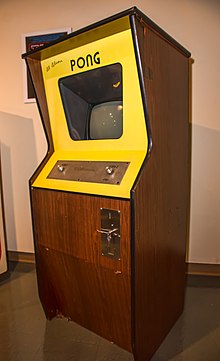
An upright cabinet of Pong on display at the Neville Public Museum of Brown County
| |
| Developer(s) | Atari |
| Publisher(s) | Atari |
| Designer(s) | Allan Alcorn |
| Platform(s) | Arcade |
| Release | 29 November 1972 |
| Genre(s) | Sports |
| Mode(s) | |
| Cabinet | Upright |
| CPU | Discrete |
| Sound | Monaural (Mono) |
| Display | Vertical orientation, black-and-white raster display, standard resolution |
Pong quickly became a success and was the first commercially successful video game, which helped to establish the video game industry along with the first home console, the Magnavox Odyssey. Soon after its release, several companies began producing games that copied Pong's gameplay, and eventually released new types of games. As a result, Atari encouraged its staff to produce more innovative games. The company released several sequels that built upon the original's gameplay by adding new features. During the 1975 Christmas season, Atari released a home version of Pong exclusively through Sears retail stores. It was also a commercial success and led to numerous copies. The game has been remade on numerous home and portable platforms following its release. Pong is part of the permanent collection of the Smithsonian Institution in Washington, D.C. due to its cultural impact. Pong has been referenced and parodied in multiple television shows and video games, and has been a part of several video game and cultural exhibitions.
Contents
Gameplay
The two paddles return the ball back and forth. The score is kept by the numbers (0 and 1) at the top of the screen.
Development and history
Atari engineer Allan Alcorn designed and built Pong as a training exercise.
Alcorn first examined Bushnell's schematics for Computer Space, but found them to be illegible. He went on to create his own designs based on his knowledge of transistor–transistor logic and Bushnell's game. Feeling the basic game was too boring, Alcorn added features to give the game more appeal. He divided the paddle into eight segments to change the ball's angle of return. For example, the center segments return the ball a 90° angle in relation to the paddle, while the outer segments return the ball at smaller angles. He also made the ball accelerate the longer it remained in play; missing the ball reset the speed.[3] Another feature was that the in-game paddles were unable to reach the top of the screen. This was caused by a simple circuit that had an inherent defect. Instead of dedicating time to fixing the defect, Alcorn decided it gave the game more difficulty and helped limit the time the game could be played; he imagined two skilled players being able to play forever otherwise.[7]
Three months into development, Bushnell told Alcorn he wanted the game to feature realistic sound effects and a roaring crowd.[7][12] Dabney wanted the game to "boo" and "hiss" when a player lost a round. Alcorn had limited space available for the necessary electronics and was unaware of how to create such sounds with digital circuits. After inspecting the sync generator, he discovered that it could generate different tones and used those for the game's sound effects.[3][7] To construct the prototype, Alcorn purchased a $75 Hitachi black-and-white television set from a local store, placed it into a 4-foot (1.2 m) wooden cabinet, and soldered the wires into boards to create the necessary circuitry. The prototype impressed Bushnell and Dabney so much that they felt it could be a profitable product and decided to test its marketability.[3]
The Pong prototype that was used in the tavern.
After hearing about the game's success, Bushnell decided there would be more profit for Atari to manufacture the game rather than license it, but the interest of Bally and Midway had already been piqued.[4][21] Bushnell decided to inform each of the two groups that the other was uninterested—Bushnell told the Bally executives that the Midway executives did not want it and vice versa—to preserve the relationships for future dealings. Upon hearing Bushnell's comment, the two groups declined his offer.[21] Bushnell had difficulty finding financial backing for Pong; banks viewed it as a variant of pinball, which at the time the general public associated with the Mafia. Atari eventually obtained a line of credit from Wells Fargo that it used to expand its facilities to house an assembly line.[22] The company announced Pong on 29 November 1972.[23][24] Management sought assembly workers at the local unemployment office, but was unable to keep up with demand. The first arcade cabinets produced were assembled very slowly, about ten machines a day, many of which failed quality testing. Atari eventually streamlined the process and began producing the game in greater quantities.[22] By 1973, they began shipping Pong to other countries with the aid of foreign partners.[25]
Home version
Atari's Home Pong console, released through Sears in 1975
Bushnell and Gene Lipkin, Atari's vice-president of sales, approached toy and electronic retailers to sell Home Pong, but were rejected. Retailers felt the product was too expensive and would not interest consumers.[27] Atari contacted the Sears Sporting Goods department after noticing a Magnavox Odyssey advertisement in the sporting goods section of its catalog. Atari staff discussed the game with a representative, Tom Quinn, who expressed enthusiasm and offered the company an exclusive deal. Believing they could find more favorable terms elsewhere, Atari's executives declined and continued to pursue toy retailers. In January 1975, Atari staff set up a Home Pong booth at a toy trade fair in New York City, but was unsuccessful in soliciting orders due to the fact that they did not know that they needed a private showing.[26][27]
While at the show, they met Quinn again, and, a few days later, set up a meeting with him to obtain a sales order. In order to gain approval from the Sporting Goods department, Quinn suggested Atari demonstrate the game to executives in Chicago. Alcorn and Lipkin traveled to the Sears Tower and, despite a technical complication in connection with an antenna on top of the building which broadcast on the same channel as the game, obtained approval. Bushnell told Quinn he could produce 75,000 units in time for the Christmas season; however, Quinn requested double the amount. Though Bushnell knew Atari lacked the capacity to manufacture 150,000 units, he agreed.[26] Atari acquired a new factory through funding obtained by venture capitalist Don Valentine. Supervised by Jimm Tubb, the factory fulfilled the Sears order.[28] The first units manufactured were branded with Sears' "Tele-Games" name. Atari later released a version under its own brand in 1976.[29]
The success of Pong attracted the attention of Ralph Baer, the inventor of the Magnavox Odyssey, and his employer, Sanders Associates. Sanders had an agreement with Magnavox to handle the Odyssey's sublicensing, which included dealing with infringement on its exclusive rights. However, Magnavox had not pursued legal action against Atari and numerous other companies that released Pong clones.[30] Sanders continued to apply pressure, and in April 1974 Magnavox filed suit against Atari, Allied Leisure, Bally Midway and Chicago Dynamics.[31] Magnavox argued that Atari had infringed on Baer's patents and his concept of electronic ping-pong based on detailed records Sanders kept of the Odyssey's design process dating back to 1966. Other documents included depositions from witnesses and a signed guest book that demonstrated Bushnell had played the Odyssey's table tennis game prior to releasing Pong.[30][32] In response to claims that he saw the Odyssey, Bushnell later stated that, "The fact is that I absolutely did see the Odyssey game and I didn't think it was very clever."[33]
After considering his options, Bushnell decided to settle with Magnavox out of court. Bushnell's lawyer felt they could win; however, he estimated legal costs of US$1.5 million, which would have exceeded Atari's funds. Magnavox offered Atari an agreement to become a licensee for US$700,000. Other companies producing "Pong clones"—Atari's competitors—would have to pay royalties. In addition, Magnavox would obtain the rights to Atari products developed over the next year.[30][32] Magnavox continued to pursue legal action against the other companies, and proceedings began shortly after Atari's settlement in June 1976. The first case took place at the district court in Chicago, with Judge John Grady presiding.[30][32][34] To avoid Magnavox obtaining rights to its products, Atari decided to delay the release of its products for a year, and withheld information from Magnavox's attorneys during visits to Atari facilities.[32]
Impact and legacy
Dedicated Pong consoles made their way to various countries, like this Russian Турнир ("Turnir", meaning tournament).
Home Pong was an instant success following its limited 1975 release through Sears; around 150,000 units were sold that holiday season.[39][40] The game became Sears' most successful product at the time, which earned Atari a Sears Quality Excellence Award.[40] Similar to the arcade version, several companies released clones to capitalize on the home console's success, many of which continued to produce new consoles and video games. Magnavox re-released their Odyssey system with simplified hardware and new features, and would later release updated versions. Coleco entered the video game market with their Telstar console; it features three Pong variants and was also succeeded by newer models.[39] Nintendo released the Color TV Game 6 in 1977, which plays six variations of electronic tennis. The next year, it was followed by an updated version, the Color TV Game 15, which features fifteen variations. The systems were Nintendo's entry into the home video game market and the first to produce themselves—they had previously licensed the Magnavox Odyssey.[41] The dedicated Pong consoles and the numerous clones have since become varying levels of rare; Atari's Pong consoles are common, while APF Electronics' TV Fun consoles are moderately rare.[42] Prices among collectors, however, vary with rarity; the Sears Tele-Games versions are often cheaper than those with the Atari brand.[39]
Tele-Games Pong IV, Sears' version of Pong sequel (Pong Doubles), was one of the many consoles that flooded the market by 1977.
Bushnell felt that Pong was especially significant in its role as a social lubricant, since it was multiplayer-only and did not require each player to use more than one hand: "It was very common to have a girl with a quarter in hand pull a guy off a bar stool and say, 'I'd like to play Pong and there's nobody to play.' It was a way you could play games, you were sitting shoulder to shoulder, you could talk, you could laugh, you could challenge each other ... As you became better friends, you could put down your beer and hug. You could put your arm around the person. You could play left-handed if you so desired. In fact, there are a lot of people who have come up to me over the years and said, 'I met my wife playing Pong,' and that's kind of a nice thing to have achieved."[47]
Sequels and remakes
Bushnell felt the best way to compete against imitators was to create better products, leading Atari to produce sequels in the years followings the original's release: Pong Doubles, Super Pong, Ultra Pong, Quadrapong, and Pin-Pong.[2] The sequels feature similar graphics, but include new gameplay elements; for example, Pong Doubles allows four players to compete in pairs, while Quadrapong—also released by Kee Games as Elimination—has them compete against each other in a four way field.[48][49] Bushnell also conceptualized a free-to-play version of Pong to entertain children in a Doctor's office. He initially titled it Snoopy Pong and fashioned the cabinet after Snoopy's doghouse with the character on top, but retitled it to Puppy Pong and altered Snoopy to a generic dog to avoid legal action. Bushnell later used the game in his chain of Chuck E. Cheese's restaurants.[2][50][51][52][53] In 1976, Atari released Breakout, a single-player variation of Pong where the object of the game is to remove bricks from a wall by hitting them with a ball.[54] Like Pong, Breakout was followed by numerous clones that copied the gameplay, such as Arkanoid, Alleyway, and Break 'Em All.[55]Atari remade the game on numerous platforms. In 1977, Pong and several variants of the game were featured in Video Olympics, one of the original release titles for the Atari 2600. Pong has also been included in several Atari compilations on platforms including the Sega Genesis, PlayStation Portable, Nintendo DS, and personal computer.[56][57][58][59][60] Through an agreement with Atari, Bally Gaming and Systems developed a slot machine version of the game.[61] The Atari published TD Overdrive includes Pong as an extra game which is played during the loading screen.[62][63] In 1999, the game was remade for home computers and the PlayStation with 3D graphics and power-ups.[64][65] In 2012, Atari celebrated the 40th anniversary of Pong by releasing Pong World.[66]
In popular culture
The game is featured in episodes of television series: That '70s Show,[67] King of the Hill,[68] and Saturday Night Live.[69] In 2006, an American Express commercial featured Andy Roddick in a tennis match against the white, in-game paddle.[70] Other video games have also referenced and parodied Pong; for example Neuromancer for the Commodore 64 and Banjo-Kazooie: Nuts and Bolts for the Xbox 360.[71][72] The concert event Video Games Live has performed audio from Pong as part of a special retro "Classic Arcade Medley".[73] Frank Black's song "Whatever Happened to Pong?" on the album Teenager of the Year references the game's elements.[74]Dutch design studio Buro Vormkrijgers created a Pong-themed clock as a fun project within their offices. After the studio decided to manufacture it for retail, Atari took legal action in February 2006. The two companies eventually reached an agreement in which Buro Vormkrijgers could produce a limited number under license.[75] In 1999, French artist Pierre Huyghe created an installation entitled "Atari Light", in which two people use handheld gaming devices to play Pong on an illuminated ceiling. The work was shown at the Venice Biennale in 2001, and the Museo de Arte Contemporáneo de Castilla y León in 2007.[76] The game was included in the London Barbican Art Gallery's 2002 Game On exhibition meant to showcase the various aspects of video game history, development, and culture.[77]
See also
References
- Boyes, Emma (9 October 2006). "London museum showcases games". GameSpot. Retrieved 9 May 2008.
Further reading
- Cohen, Scott (1984). Zap! The Rise and Fall of Atari. McGraw-Hill. ISBN 978-0-07-011543-9.
- Herman, Leonard (1997). Phoenix: The Fall & Rise of Videogames. Rolenta Press. ISBN 978-0-9643848-2-8.
- Kline, Stephen; Dyer-Witheford, Nick; De Peuter, Greig (2003). Digital Play: The interaction of Technology, Culture and Marketing. McGill-Queen's Press. ISBN 978-0-7735-2591-7.
- Lowood, H. (2009). "Videogames in Computer Space: The Complex History of Pong". IEEE Annals of the History of Computing. 31 (3). pp. 5–19. doi:10.1109/MAHC.2009.53.
External links
| Wikimedia Commons has media related to Pong. |
- Pong-story.com, the most comprehensive site about Pong and its origins.
- The Atari Museum An in-depth look at Atari and its history
- Pong Owner's Manual, 1976
- THE Pong Flyer
- Pong variants at MobyGames
Categories:
- Arcade games
- Atari arcade games
- Atari games
- Discrete video arcade games
- Home video game consoles
- First-generation video game consoles
- Head-to-head arcade games
- Mobile games
- Paddle-and-ball video games
- Tennis video games
- 1970s toys
- 1972 video games
- 1972 in video gaming
- Products introduced in 1972
- Video games developed in the United States



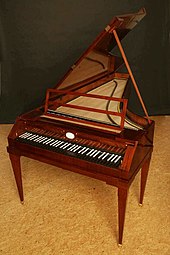
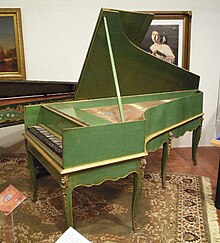







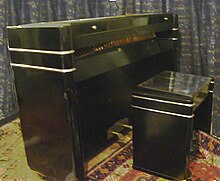





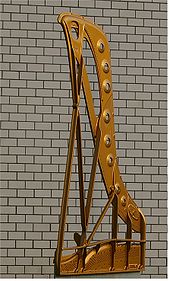
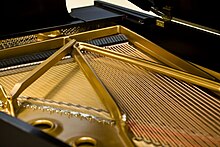







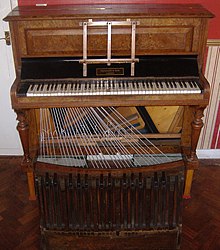
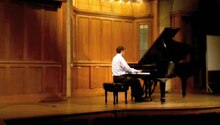



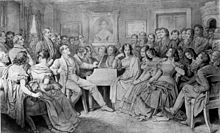




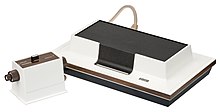
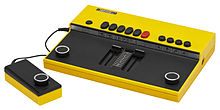










No comments:
Post a Comment